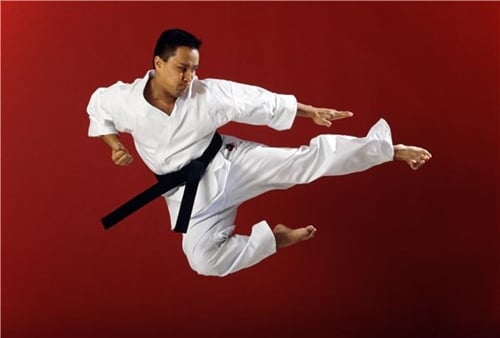3 Reasons Why Blogs are Essential to Your Martial Arts School
Blogging is an effective way for martial arts schools to establish a voice and personality, as well as build deeper relationships with potential students. Whether martial arts schools choose to utilize a blog on their websites or an external site, it can be difficult to drive the desired amount of traffic.
Blogs are gaining steam in the online sphere. There are 240 million blogs, according to an infographic compiled by Quick Sprout, a website traffic consulting firm. People are responding to this communication medium, and 329 million people view 25 billion pages of blogs every month. Most people read between 5 to 10 blogs a day. Most importantly, individuals enjoy the essence of blogs. Eighty-two percent of consumers like reading relevant content from company blogs.
Blogs boosts SEO results and awareness
There are several reasons why blogs are sweeping the social media world. It is an effective way to garner traffic to your website and convert viewers into martial arts students. Part of why blogs boost traffic is because they have more inbound links than a website has on its own. Links are one of the most important aspects in Google’s ranking algorithm. Sites that blog typically have 97-percent more inbound links than other websites do. This statistic shows that blogs play a major role in attracting more viewers.
After people visit martial arts schools’ websites and read their blog articles, they can share them on Twitter, Facebook and LinkedIn, among other networks. When people post the content on their social channels, they increase exposure of your business.
Content increases conversion rate
Aside from garnering traffic and raising awareness of your martial arts school, blogs offer tangible results. Content generates more revenue; 61 percent of U.S. consumers have made a purchase because of a blog post. Companies with more than 51 blog articles see a 77 percent boost in median monthly leads.
Blogs positively affect individuals’ purchasing decisions. In fact, 31.1 percent of consumers that use the Internet believe a company’s blog is the second most influential factor when it comes to buying services.
Target audience, purpose and length are important considerations for blog posts
For every blog post, it’s essential to consider the target audience. Does the content meet the needs and interests of martial arts students and their parents? What are you trying to tell them? Will the content solve their problems? After solidifying the target audience, it’s vital to consider the purpose of the content. What are you trying to accomplish?
It’s important to be intentional when drafting blog posts. First, consider the substance of the post. Does it warrant a longer piece or a short piece? Forbes highlighted the debate over whether people respond better to long or short posts and concluded it depends on the end goal. If you are trying to provide information about your martial arts services, keep it short and sweet. You’re getting to the point quickly. If it involves a call to action, such as a newsletter or email subscription, it shouldn’t be too long. Another way to get to the point quickly is to place visual aids like an infographic within the article.
While shorter pieces capture people’s attention quickly, longer articles may encourage people to share with others. In fact, posts that are more than 1,500 words garner 68.1 percent more tweets and 22.6 percent more Facebook likes, according to Forbes.
There are certain times of day that people are more likely read blogs. Sixty-five percent of people prefer reading articles in the morning – 10 a.m. is the most popular time reading blogs. In terms of days of the week, people typically read blogs on Monday and Thursday.
As you embark on your blogging journey, Jeff Bullas, a social media strategist, recommended bloggers use an informal style. He also suggested imagining the post is to one person who represents the target audience. When martial arts school owners start blogging, they will see increased Web traffic, a greater awareness of their organization and more students enrolling in classes.
